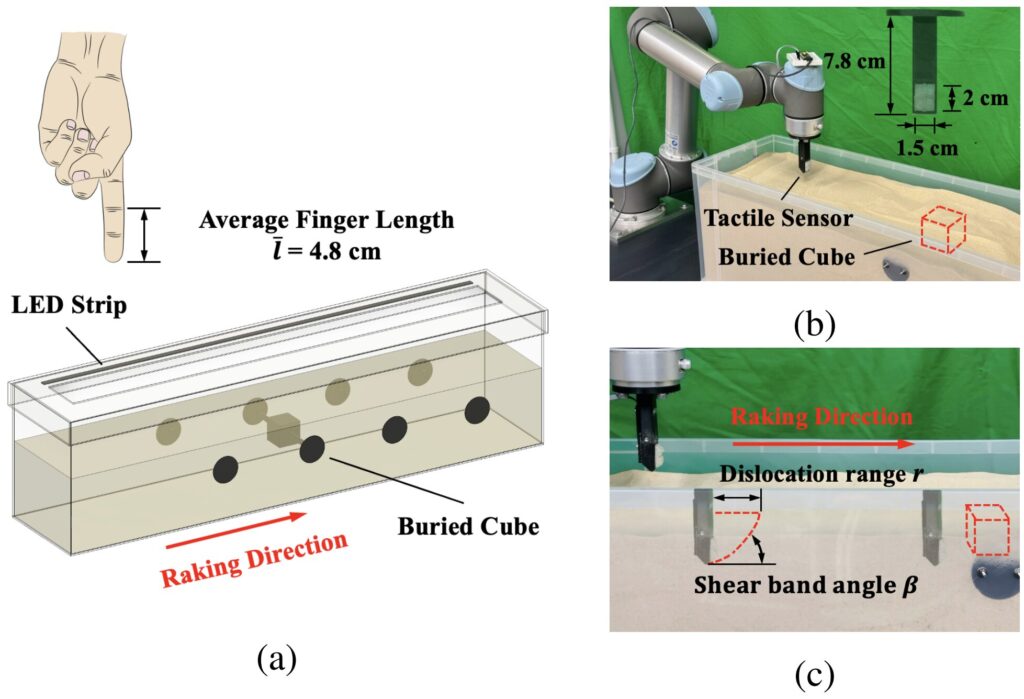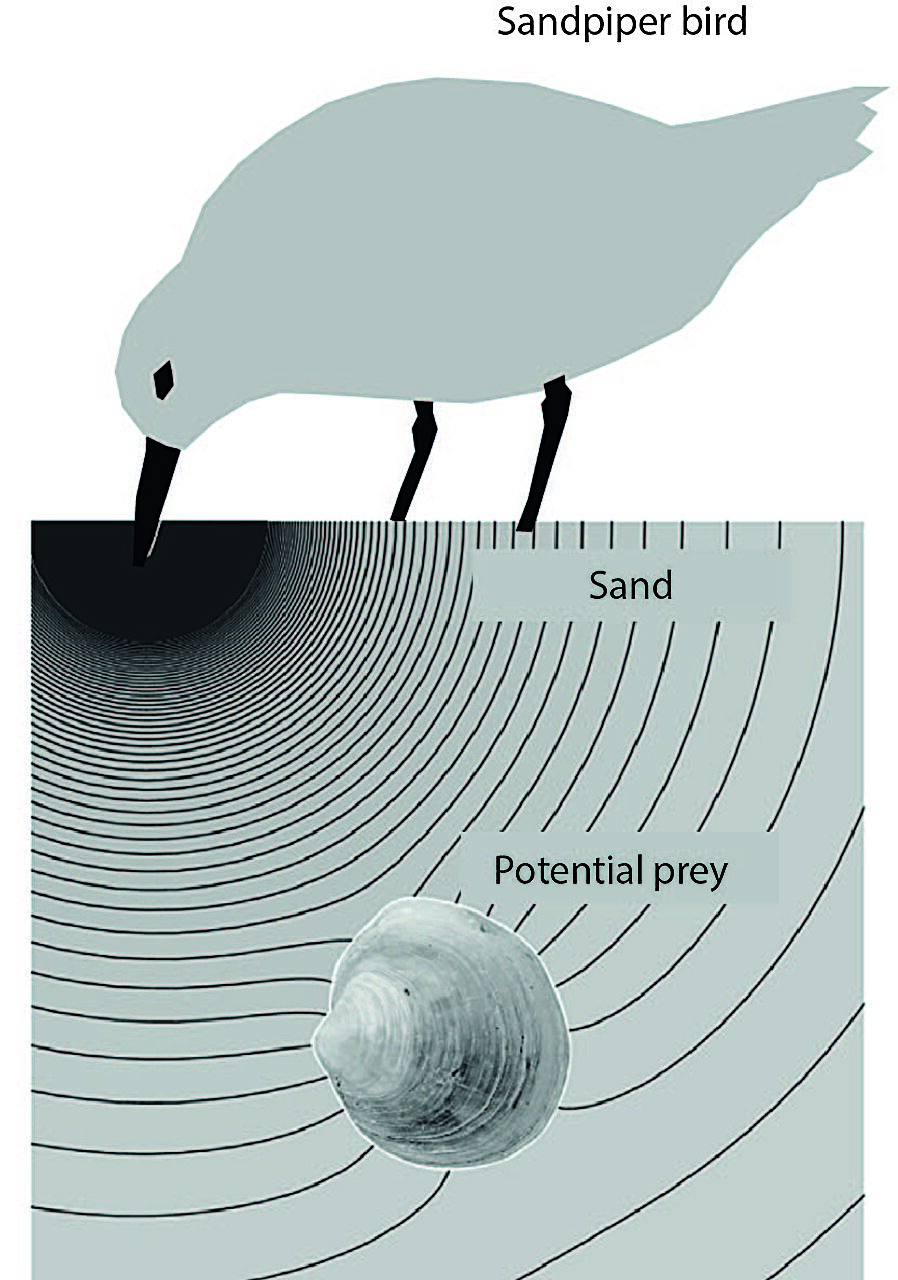Imagine reaching into a box of sand and somehow feeling that something is hidden inside—without ever touching it. It sounds like a trick of intuition or imagination, but new research suggests it’s something far more remarkable. Scientists have discovered that humans possess a subtle, long-overlooked ability to detect objects remotely through touch—an echo of a sense that was thought to belong only to certain animals.
A study led by researchers from Queen Mary University of London and University College London has found that our hands can sense nearby objects even when there is no direct contact. Published at the IEEE International Conference on Development and Learning (ICDL), this discovery reveals that humans, like certain birds, can perceive hidden objects through tiny mechanical cues traveling through materials such as sand.
The finding doesn’t just expand our understanding of human sensation—it opens up new possibilities for robotics, artificial intelligence, and assistive technology, inspired by the remarkable sensitivity of the human hand.
The Origins of Remote Touch
For decades, touch has been understood as a proximal sense—something that depends on direct contact. You feel a surface because your skin presses against it, allowing your nerves to register texture, shape, and pressure. But in nature, some animals have evolved to stretch the boundaries of touch beyond physical contact.
Shorebirds such as sandpipers and plovers, for example, use “remote touch” to detect prey buried under sand or mud. Their beaks pick up on faint vibrations and pressure waves that bounce off hidden objects—tiny mechanical reflections that give away the presence of worms or crustaceans below the surface.
Intrigued by this phenomenon, researchers wondered: could humans share a similar, though much subtler, ability? Could we, too, detect something hidden in our surroundings through indirect physical cues that our brains might not consciously notice?
Testing the Hidden Human Sense
To answer this question, the research team designed an elegant experiment. Participants were asked to move their fingers gently through fine sand to find a small hidden cube. Crucially, they had to identify the cube’s location before actually touching it.
At first, the task seemed almost impossible. How could anyone detect an object they couldn’t feel? But as the experiment unfolded, a surprising pattern emerged. Many participants were able to sense the cube’s presence with astonishing accuracy—up to 70.7% precision within the expected detection range.
Through physical modeling, the scientists discovered why. As fingers moved through the sand, they generated subtle pressure waves that traveled through the grains. When those waves hit a buried object, they bounced back—creating tiny mechanical “reflections.” The fingertips, incredibly, were sensitive enough to pick up these minute differences in the sand’s movement, even though the object itself was not directly touched.

This meant that human hands could detect buried objects by reading the echoes of their own movements—a phenomenon that approaches the theoretical physical limit of what can be detected through granular materials.
The Science of Touching Without Contact
The implications of these findings reach far beyond curiosity. They challenge long-held assumptions about the boundaries of human perception. If our hands can pick up such faint cues, then touch is not just about direct contact—it’s a far richer and more complex sense than we imagined.
Our skin, especially the fingertips, contains thousands of mechanoreceptors that respond to changes in pressure, texture, and vibration. These sensors feed data to the brain at lightning speed, allowing us to perceive the world in exquisite detail. The new study shows that these same receptors can interpret indirect information—tiny shifts and ripples traveling through other materials—to infer what lies nearby.
In other words, our tactile system may be tuned not just to the contact we make, but also to the consequences of our movements through the environment. This ability could be a vestige of evolutionary adaptation—perhaps a subtle form of spatial awareness that once helped humans manipulate tools, dig for resources, or interact with hidden objects in nature.
When Humans Meet Machines
To explore the boundaries of this ability, the researchers went a step further. They trained a robotic system equipped with tactile sensors to perform the same task: detecting a hidden object beneath sand. Using a Long Short-Term Memory (LSTM) algorithm—a form of artificial intelligence capable of recognizing patterns over time—the robotic arm learned to sense buried cubes by interpreting mechanical signals similar to those that human fingers generate.
The results were intriguing. While the robot could detect objects from slightly farther distances, it often made false detections, achieving only about 40% precision overall. Humans, by contrast, demonstrated more reliable accuracy within the expected range.
This finding highlights an important truth: even with advanced algorithms, machines still struggle to match the nuanced, adaptive perception of the human hand. Yet, the comparison also points to exciting potential. By studying how humans achieve such fine sensitivity, engineers can design robots with more human-like touch—robots capable of performing delicate tasks in environments where vision alone is not enough.
Expanding the Boundaries of Human Perception
The research team’s findings have profound implications for both science and technology. For one, they expand our understanding of the human perceptual world—what psychologists call the “receptive field.”
Dr. Elisabetta Versace, Senior Lecturer in Psychology at Queen Mary University of London and lead of the Prepared Minds Lab, emphasized the importance of this discovery. “It’s the first time that remote touch has been studied in humans,” she explained, “and it changes our conception of the perceptual world in living beings, including humans.”
Her words capture the essence of what makes this research so extraordinary. It’s not just that humans have a new, measurable sensory ability—it’s that we now realize the boundaries of our perception are more fluid than we thought.
Beyond the Lab: Future Applications
The potential applications of remote touch go far beyond academic curiosity. Zhengqi Chen, a Ph.D. student at Queen Mary’s Advanced Robotics Lab, highlighted how these insights could shape future technologies. “This discovery opens possibilities for designing tools and assistive technologies that extend human tactile perception,” Chen said.
Such technologies could allow people to “feel” what lies beneath the surface without direct contact—transforming fields that depend on delicate, non-invasive sensing. Archaeologists could locate buried artifacts without damaging them. Engineers could explore unstable terrains, such as sandy seabeds or Martian soil, without risk. Search-and-rescue robots might one day detect survivors trapped under rubble by reading vibrations in the surrounding material.
Lorenzo Jamone, Associate Professor in Robotics and AI at University College London, emphasized the power of collaboration behind the study. “What makes this research especially exciting,” he said, “is how the human and robotic studies informed each other. The human experiments guided the robot’s learning approach, and the robot’s performance provided new perspectives for interpreting the human data.”
Their work is a powerful demonstration of how psychology, robotics, and artificial intelligence can come together to explore one of the most ancient—and still mysterious—of human senses.
A New Frontier for Touch
For centuries, humans have relied on sight and sound as the dominant senses for exploring the unknown. Touch has often been seen as the most limited—bound to what we can physically reach. But this study challenges that hierarchy. It suggests that our hands are far more perceptive, capable of “seeing” through materials, sensing the invisible, and translating subtle vibrations into meaningful information.
It’s a humbling and awe-inspiring reminder of the sophistication built into our biology. Beneath our awareness, our bodies are constantly decoding the physical world in ways we are only beginning to understand.
The discovery of human remote touch opens a new chapter in sensory science. It invites us to rethink what it means to perceive, to interact, and to be aware of the world around us—not as separate observers, but as deeply connected participants in its hidden rhythms.
In the shifting grains of sand, the human hand has once again proven its quiet genius—a bridge between body and environment, touch and intuition, science and wonder.
More information: Zhengqi Chen et al, Exploring Tactile Perception for Object Localization in Granular Media: A Human and Robotic Study, 2025 IEEE International Conference on Development and Learning (ICDL) (2025). DOI: 10.1109/icdl63968.2025.11204359






